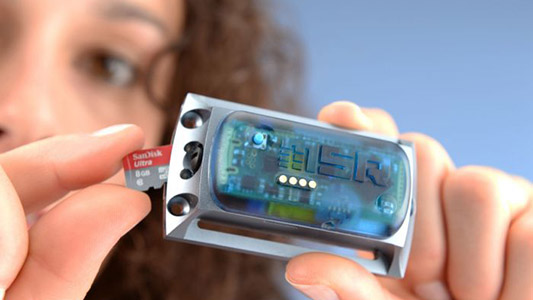Data is drowning businesses today. There has never been such a vast amount of data about clients, vendors, goods, and business partners, yet it is so vitally critical. While data warehouses are better at storing information, data mining is more efficient in gathering it on a large scale. Current business intelligence solutions are useful because they guarantee to make sense of the data tsunami and provide the insights hidden inside that are essential for competitive advantage. That illusive objective has been the main driving force for the creation of BI technology. The main changes in business intelligence methodologies are explained in this article, along with the benefits of the most recent automation-based evolution of this technology based on machine learning and AI. Business makers should be aware of this trend as they evaluate products from BI suppliers as they transition to this new strategy. For legacy storage or analytics, the Extract, Transform, Load (ETL) paradigm consolidated data from various systems into a single database, data store, or warehouse. To make it simpler to execute queries and get data for reporting, data was normalised after it was saved by removing duplicates and redundancies.
Emergence of Data Discovery and Visualization

A new set of BI products arose that did away with the technical stack intended for IT users and concentrated on giving business users tools for data search and visualisation. Corporate users were given the ability to access their data via BI tools, even without highly developed technical capabilities. It was a huge triumph when data discovery and visualisation technologies first appeared and freed business analysts from out-dated Extract, Transform, Load (ETL) procedures and data modelling. This revolution substantially increased the pace of data analysis and democratised data, enabling businesses to make data-driven decisions in challenging settings. Data visualisation enables modern business intelligence to be both a science and an art. Employees, their managers, and the companies they work for as a whole have easier access to the key performance indicators. As a result, IT-focused BI companies started incorporating these data finding and visualisation features into their product lines fairly quickly. Customers, on the other hand, swiftly pushed data discovery and visualisation suppliers to offer corporate licences and functionality, such as data governance, security, data preparation, and report generation.
The Next Evolution: Augmented Analytics
In order to make sense of potentially enormous datasets created by, for example, IoT devices, individuals with some technical skills are required for features like data preparation as data sets grow in size. After all, as part of the ETL process, data preparation and integration were normally handled by IT specialists. As a result, businesses consult data experts. As a result, a third strategy for conducting business analytics has emerged. In essence, it’s a development of the self-service automation strategy known as Augmented Analytics. By automating the development of insights through the use of machine learning and artificial intelligence algorithms, augmented analytics promises to lessen reliance on highly skilled data scientists. The ability to automate data preparation and find some correlations and anomalies in massive data sets is currently a feature that is built into many popular BI tools. Although some systems can perform analysis, even generate insights and action plans, there is still a lot of hype to make things confusing.
Data Logger Market Analysis and Industry Segmentation

The market for data loggers is projected to grow at a CAGR of 7.4% during the forecasted period. (2021 – 2026). A sensor and microprocessor are inserted within the data logging device to assist it in achieving its objective. On the market, there are many different kinds of data loggers and sensors that may satisfy a wide range of requirements for enterprises anywhere. In order to provide users with a record of the events that took place during a specific time period, a variety of data loggers are designed to gather data about the environment in which they are situated. In order to track, test, and analyse an asset’s performance and overall health, data loggers record sensor data for longer periods of time. There are several significant producers on the market. None of the businesses now control a significant portion of the market due to the growing competition. The market for data loggers is considered as a fantastic investment opportunity because of the tremendous advantages that manufacturers may obtain and the significance of data to the industry. This is causing the market to become more fragmented. To acquire a competitive edge and meet shifting consumer needs, businesses constantly work to improve their products.
The Future of BI : Data Loggers or Data Gateway?

By using data gateways, labs can actively act on the consolidated data rather than just consolidate it. In other words, data gateways are capable of sending information back out as well. Teams can construct automatons and alarms that make their life more easier because they can communicate with all of the lab’s devices at simultaneously. Failure alarms are one of the most important applications of this. Whereas bulky old Data Loggers might have had an LED-screen to show alerts, Date Gateways can instantly send a text, email, or computer message to the appropriate person to rescue the day. The cost of spoiled samples or products could be prevented by this feature alone. Teams can receive proactive alerts and reminders from the intelligent Data Gateways when their equipment requires upkeep, requires improved calibration, or is about to break. Real-time data and device input can also be accessed remotely thanks to them. This enables users to activate and deactivate devices’ power as necessary, as well as open and close doors. Data Gateways provide a link to a more intelligent, networked lab. They enable labs to make greater use of the tools they already have to act upon and comprehend their data. Gateways enable teams to utilise their information in innovative ways since they centralise data. Despite the fact that Data Gateways have many more advantages than Data Loggers, Gateways are really more affordable. They provide a cost-effective single-sourced solution. whereas with Data Loggers, the same objective must be achieved by teams putting together laborious solutions. The end result is a comprehensive and economical solution. Data Gateways provide a lab with more future opportunities than Data Loggers alone ever could.
Conclusion Innovative companies take advantage of the fast-paced industrial environment by utilising smart technology. Although data is an essential component of practically every industry, it can also be crucial in some circumstances. From business bottom, it is possible to create data analysis software that can then connect with a mobile application to provide a better user interface. Solutions with direct access to production network controllers and actuators are referred to as embedded data loggers. They are created to function as a component of the control system network. These loggers have straightforward functionality and can be used for a variety of tasks, such as resolving process disruptions, recording downtime, keeping track of product ancestry, and monitoring performance. None of this demands the expense and complexity of cloud computing for the majority of manufacturers, especially smaller ones. None of it necessitates the use of sophisticated cloud services, gigabytes of data storage, difficult mathematics, or machine learning tools.












